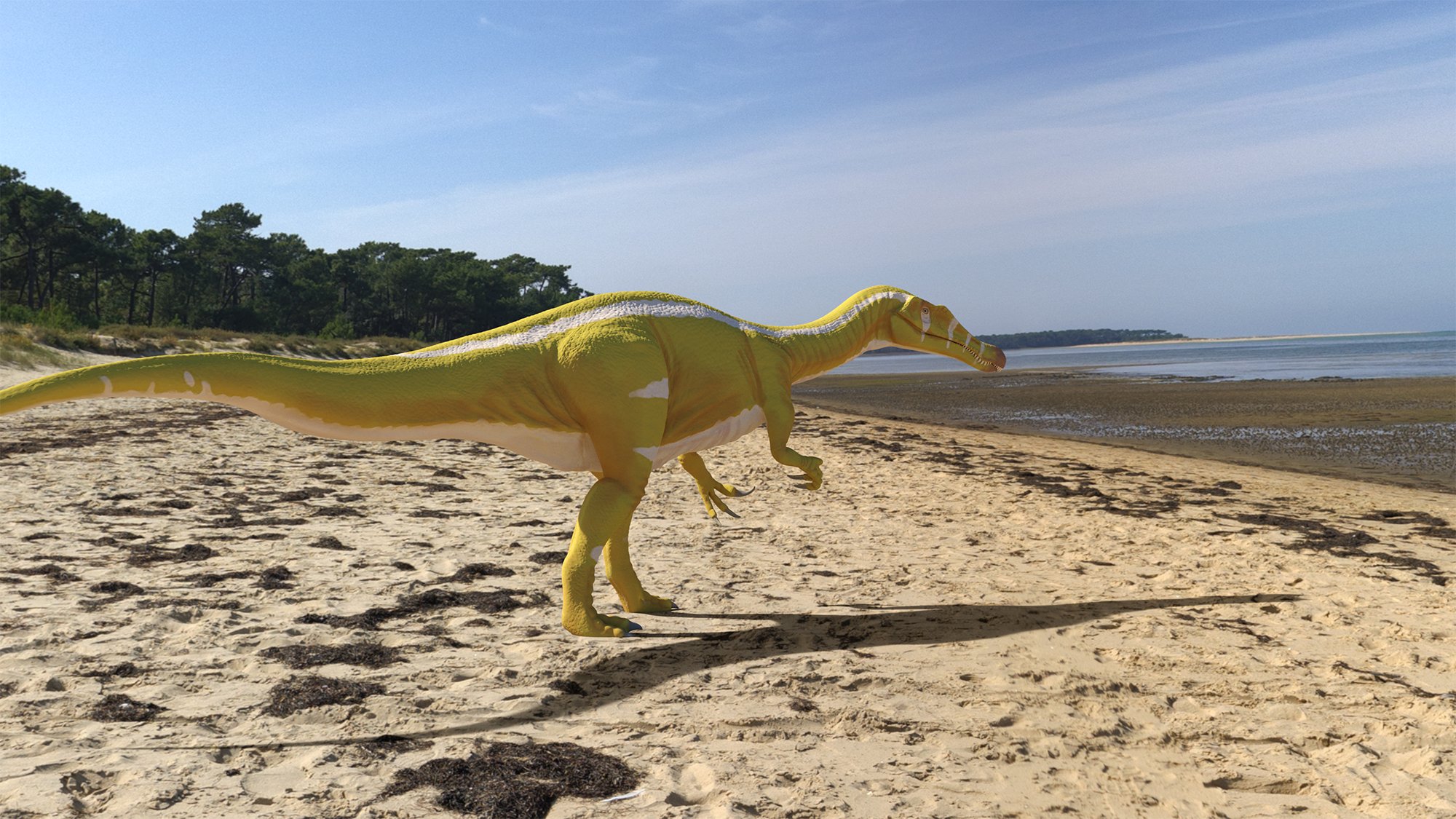

A dinosaur specimen unearthed in Castellón, Spain in 2011 is likely a brand new species and genus of spinosaur, a family of dinosaurs whose fossils have been found in Europe, Asia, South America, and Asia. The new findings were published May 18 in the journal Scientific Reports.
[Related: What was going on inside of this spinosaur’s brain?]
This new species is named Protathlitis cinctorrensis—which comes from the Greek word for “champion” in reference to football club Villarreal C.F. ‘s Europa League win in 2021.
“Three of the authors of this paper live in Villarreal, and with the club’s centenary this year, we wanted to recognise its work both on and off the pitch by naming a dinosaur genus after it,” co-author and Jaume I University paleontologist Andrés Santos‑Cubedo, said in a statement.
The discovery, alongside another the uncovering of a moderately sized dinosaur named Vallibonavenatrix cani, suggests that the Iberian peninsula could have been a very diverse area for medium-to-large bodied spinosaurid dinosaurs.
Spinosaurs were carnivorous theropod dinosaurs that were typically large and stood on two feet. Some of the better known spinosaurids include the crocodile-mouthed 4,000 pound Baryonyx and Spinosaurus, who might be recognizable from its fictional fight with Tyrannosaurus in Jurassic Park III. Many of these unusual 13 to 22 ton dinos stalked ancient riverbanks preying on large fish and lived a different lifestyle than more familiar theropods, such as Allosaurus and Tyrannosaurus.
“The spinosaurs are quite special theropods. They ate fish and lived in and around water, but there’s a lot of debate about just how aquatic they were,” Cassius Morrison, a co-author of the study and PhD student from the UK’s Natural History Museum, said in a statement. “Some scientists suggest they were like herons, snapping up fish while wading, while others think they were more like a penguin, and could move underwater to hunt fish. Suchomimus seems to be more like a heron, while Baryonyx and Spinosaurus had higher bone density which might mean they could have spent time underwater.”
Spinosaurs are believed to have originated in Europe before moving to Africa and Asia sometime during the Late Cretaceous, but the evidence of their existence in present-day Spain is primarily based on fossilized tooth remains.
In this study, a team of paleontologists analyzed a right jaw bone, one tooth, and five vertebraediscovered in the Arcillas de Morella Formation in eastern Spain. This formation is known for containing fossils of Iguanodon and its relatives and titanosaur-like dinosaurs.
[Related: Spinosaurus bones hint that the spiny dinosaurs enjoyed water sports.]
The fragments were dated to between 127 and 126 million years ago, during the late Barremian or Early Cretaceous period. The team estimates that the new specimen was around 32 to 36 feet long—about the length of a telephone pole.
The team compared this newly-named specimen to data on other spinosaurs to figure out its evolutionary relationship to other species within the family of dinosaurs. They believe that this new dinosaur appeared in the Early Cretaceous in a large area of land in the Northern hemisphere called Laurasia.
“Our research demonstrates that two subfamilies of spinosaur occupied western Europe during the Early Cretaceous (145-100 million years ago) before later migrating to Africa and Asia,” Andrés said. “Baryonyx-like spinosaurs became dominant in Europe, while Spinosaurus-like spinosaurs were most abundant in Africa.”